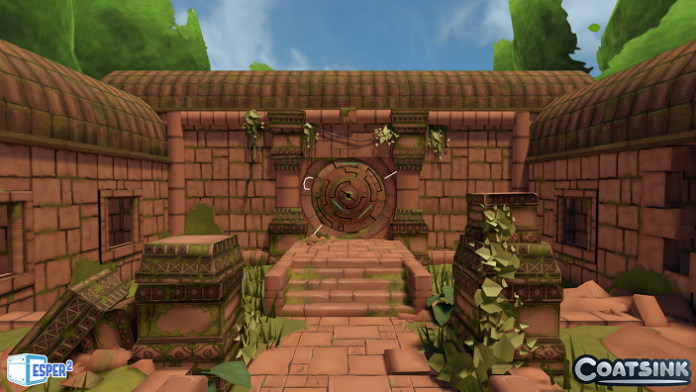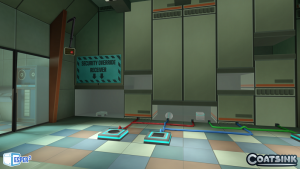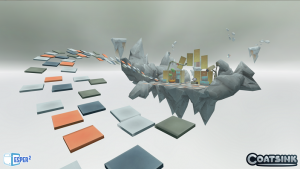Though it continues to develop traditional videogames, indie studio Coatsink Software is also knee-deep in virtual reality (VR). Earlier this year the team released its first ever VR title in the charming puzzle adventure, Esper. Last week it followed that up with the excellent sequel, Esper 2, while it’s also working with Boneloaf to bring Gang Beasts to the medium. VRFocus recently spoke to the developer about its work, paying specific attention to last week’s big release.
In the interview below Esper and Esper 2 lead designer Paul Crabb talks about the decision to move forward with this series once development on the original had wrapped up. He explains what fans can expect in the sequel, as well as touching upon the role of the expanded cast and mechanics. Elsewhere, Crabb teases Coatsink Software’s future in VR, and what fans can expect in the future.
VRFocus: For those that haven’t played the first, what is Esper and where does the sequel start off?
Paul Crabb (PC): Esper is a game set in an alternate 1970s where an unknown event has caused random members of the world’s population to acquire telekinetic powers. You play one of these people, and in an effort to maintain control and order, your government has ordered you to undergo training to ensure your abilities are under a safe degree of control. Your training occurs under the supervision of a rapidly reorganised local corporation, set up with the intention of studying, researching, and combating the effects of the telekinetic outbreak.
I won’t go into specifics about what happens during your training, but in Esper 2, a year later, it appears that you are now working for the very organisation that trained you.
VRFocus: How does the sequel expand on the original?
PC: In Esper 1 you spend the whole game in a single room. For the sequel, we wanted to break out of this format and take the player on an adventure so they can really play around with their powers. As such, the game is longer, the environments are much more varied and detailed, there are more characters, more puzzle mechanics; it’s just a bigger game overall.
VRFocus: Why did Coatsink decide to jump straight into a sequel to Esper?
We simply weren’t done with it. We had learned so much about VR when making Esper 1, that by the time we were finished, we wanted to see what it would look like if we applied those lessons back into the very thing that taught them to us. Having said all of that, none of this would’ve happened without the incredible support from Oculus and their enthusiasm for Esper.
VRFocus: How has puzzle design evolved in the sequel?
PC: We’ve added new mechanics, improved the controls, and placed the puzzles in a variety of different environments, but for the most part, the biggest difference is probably that the context of the puzzles is more situationally grounded than the first game. It’s no longer a series of tests and training courses; the puzzles require the player to actively engage with the story and their environment. Hopefully players will feel that their powers are having more of an impact on the world this way.
VRFocus: One of the highlights of the sequel is the voice talent, including Nick Frost, Lara Pulver and Sean Pertwee. What roles do they play and what was the thinking behind each piece of casting?
PC: As much as we love Geoff, we didn’t want to subject the player to having to listen to him for an entire other game, especially one that’s roughly four times the content of the first. So we wrote some other characters into the world so we could explore the kinds of personalities that would exist in a world as crazy as Esper‘s. Nick and Lara play other members of ESPR, the same organisation that Geoff and the player work for. Sean’s character is a little less clearly defined, and I’d love to hear what players think of him by the end of the game.
VRFocus: You’ve turned development round in a remarkably short amount of time; how were you able to do this?
PC: I think it just feels like a shorter time than it actually is because GearVR has only recently become commercially available. We finished Esper 1 last year and it went on sale for the Innovator Edition in March of this year. We knew we weren’t finished with the world of Esper so we pretty much started work on the sequel as soon as we could.
VRFocus: Some developers have had trouble getting their Gear VR titles onto the Galaxy Note 4 but Esper 2 is getting a simultaneous release. How did you pull this off and what tips would you offer to other developers to achieve the same?
PC: We had a lot of trouble too. The biggest bottlenecks are the vertex count, and the number of draw calls you can do per frame. To make sure we stayed under the recommended amount, we started the project with realistic goals based on what we had learned from Esper 1, but even then we had to make a lot of sacrifices to keep the performance satisfactory. In the end there was no magic solution. Just a lot of work, a lot of difficult decisions, a lot of saying “No” to artists and designers, and above all, lots and lots and lots of testing!
VRFocus: Esper itself is on its way to the Oculus Rift, will you be bringing the sequel over to the HMD too?
PC: Yes, that’s the plan.
VRFocus: What about Coatsink’s next original VR project? You’re working on VR support for Gang Beasts, but could we see an Esper 3 or a brand new title from you?
PC: Another very good question! … Sorry. We’ve nothing to announce at the moment, but I can say that we’re far from done with VR.
-END-
The post Coatsink Talks Esper 2, Story, Note 4 Development and More appeared first on VRFocus.

















